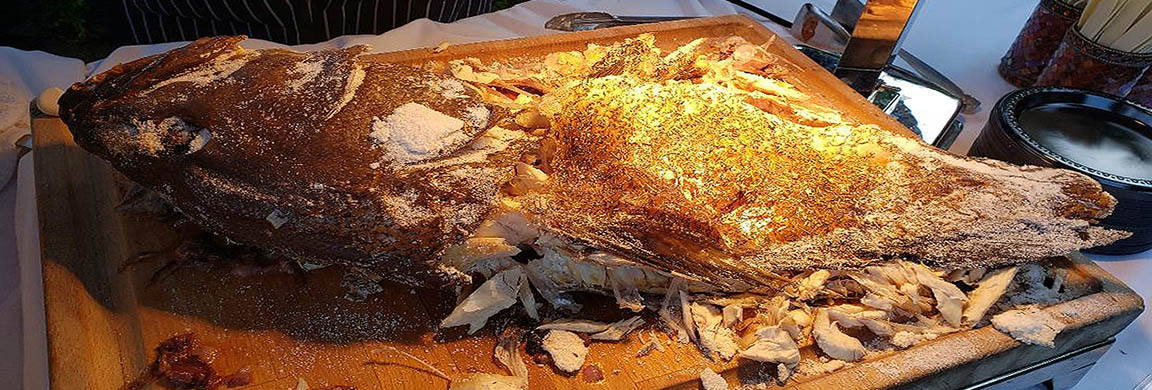
Wild Salmon Vs. Farmed Raised: Which is Better?
By Physique Bodyware.
Salmon is one of the healthiest fish available today and is for good reason. It is rich in various nutrients that are hard to find in most foods. On the other end, there have been many reports as to the dangers of consuming salmon due to its high levels of mercury and PCBs. Much of the confusion comes with the differences between wild and farm-raised salmon. As you will see, wild salmon are superior nutritionally and environmentally.
What’s the Difference?
If you were to hold a wild salmon next to a farmed-raised one, it would be extremely difficult to find any differences among the two. Just because the two may look exactly the same, there are huge differences between both between the two. You would have no clue just by looking at them.
Nutrition
Salmon is low in saturated fats and calories, contains high levels of protein and healthy omega-3 fatty acids. Omega-3 fatty acids are consider essential because our body cannot naturally produce them, but can be found in foods like salmon. It also an extremely good source in other nutrients including selenium, niacin and vitamin B12 along with being a good source in many other vitamins and minerals. Wild salmon is far more nutritious in terms of fat and protein content. Wild fish contain 20% more protein, 20% less fat and are in general much smaller. Even being fattier, farmed raised contain much less usable omega-3 fatty acids and contain higher levels of omega-6 fatty acids. The lower the ratio of omega-3 to omega-6 fatty acids. Wild fish in general contain a much more favorable ratio of omega-3′s to omega-6. The ratio for salmon is 15:1 for wild as compared to 3:1 for farmed raised.
PCBs
Polychlorinated biphenyls or PCBs are a class of organic compounds that are highly toxic. Even back in the 1930′s they discovered just how dangerous it was and several papers were published on it. I can’t believe it took our country all the way until the 1970′s to ban it. PCBs were used as coolants and insulating fluids for transformers and capacitors, plasticizers in paints and cements and a stabilizing additives in flexible PVC coatings. Consuming PCBs has even been linked with causing cancer. Even though they have been outlawed, they are still present in our environment, especially in our waters. Salmon are carnivorous and eat many small fish that contain high levels of PCBs. The levels of PCBs in farmed-raised were 8 times higher than found in wild caught salmon. That is huge considering how dangerous it is to our health.
Coloration
Salmon are generally colored either in either orange, red and occasionally white. They are actually naturally white and only get their coloration from the food they eat that includes krill and small shellfish. Because white salmon would not be as popular, farmed salmon are actually given chemicals to turn their flesh these colors. On top of not being healthy for the fish and humans, it also makes it harder to shop for them.
Disease and Contaminants
All salmon contain slight amounts of parasites and some even contain disease, but not at the same levels compared to farmed-raised. Seeing that they are held in giants nets in the ocean, it’s no surprise that aquaculture of salmon contain more disease. They are also given tons of antibiotics to fight off the diseases that they could be carrying in these closed spaces. It’s scary to think that we have no idea what kind of antibiotics or pesticides are in these farmed fish.
Environmental
I previously discussed the aquaculture farming of fish and it’s various environmental impacts. With so many fish packed together in a net in the ocean, there are bound to be negative impacts to the environment. Excess waste from these fish reduce the amount of oxygen in the water and hurt the nearby ecosystem. Also, whenever farmed fish escape from their nets, they can spread disease and lice that are normally not seen in wild fish. This can really hurt the wild populations by making it harder for young salmon to survive to adulthood.
Taste
If you were to try both farmed and wild salmon, you would notice the difference immediately. I have had both and I can say that there is no comparison. If you are currently eating farmed salmon or are not sure what type you buy, try wild and you will not be disappointed.
Below is a summary of the differences between both types of salmon:
Wild Vs. Farmed Salmon Comparison
Wild Farm-Raised
Nutrition Higher Ratio of Omega-3 to Omega-6 Fatty Acides Lower levels of protein and much fattier
PCBs Low levels 8 times as many PCBs
Coloration Naturally orange or red because of diet Given pigments to turn color of salmon from natural white
Disease Contain low amounts of lice, disease and contaminations High levels of disease, lice pesticides and given large amounts of antibiotics
Environmental Populations killed off by escaped farmed fish Excess waste and disease harm natural eco-system
Price Slightly higher price Cheaper because already in nets
Varieties
There are several varieties of salmon whether it be from the Atlantic or Pacific. I could list all them here, but this articles does a great job in describing all of the main types of Salmon that we eat.
Where to Buy
The best way to get wild salmon any time of the year is to check out your local natural store. I sometimes get frozen salmon at Trader Joe’s or other local natural stores that is always wild. They taste just as good as if you were to buy it from a fish market. Always be sure to be vigilant in asking where the fish comes from and whether it is wild or farmed. If they do not know the answer or the price looks a little too low, assume that it is not wild. There have been instances of several fish markets selling farmed fish as wild. You might also be surprised that canned salmon is usually wild. It’s an affordable way to get wild salmon anytime of the year. Once again, check the labels to make sure that it is in fact wild.
Choose Wild Over Farmed
Next time you go to buy salmon, make sure to check that you are buying wild salmon. It is overall just a healthier fish for you and far superior in terms of taste. There are just too many negatives against farmed salmon to make it not worth the slightly lower price. If more people demand wild salmon when buying it, it could start to eliminate many of these harmful salmon aquaculture farms
